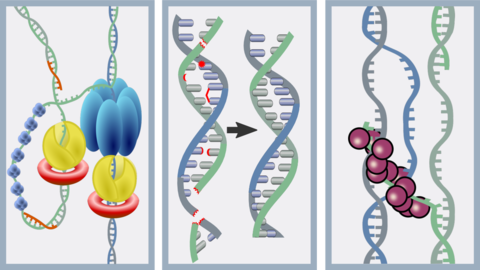Molecular Mechanisms of DNA Replication and Repair Machinery: Insights from Microscopic Simulations

Reproduction, the hallmark of biological activity, requires making an accurate copy of the genetic material to allow the progeny to inherit parental traits. In all living cells, the process of DNA replication is carried out by a concerted action of multiple protein species forming a loose protein–nucleic acid complex, the replisome. Proofreading and error correction generally accompany replication but also occur independently, safeguarding genetic information through all phases of the cell cycle. Advances in biochemical characterization of intracellular processes, proteomics, and the advent of single-molecule biophysics have brought about a treasure trove of information awaiting to be assembled into an accurate mechanistic model of the DNA replication process. This review describes recent efforts to model elements of DNA replication and repair processes using computer simulations, an approach that has gained immense popularity in many areas of molecular biophysics but has yet to become mainstream in the DNA metabolism community. It highlights the use of diverse computational methods to address specific problems of the fields and discusses unexplored possibilities that lie ahead for the computational approaches in these areas.